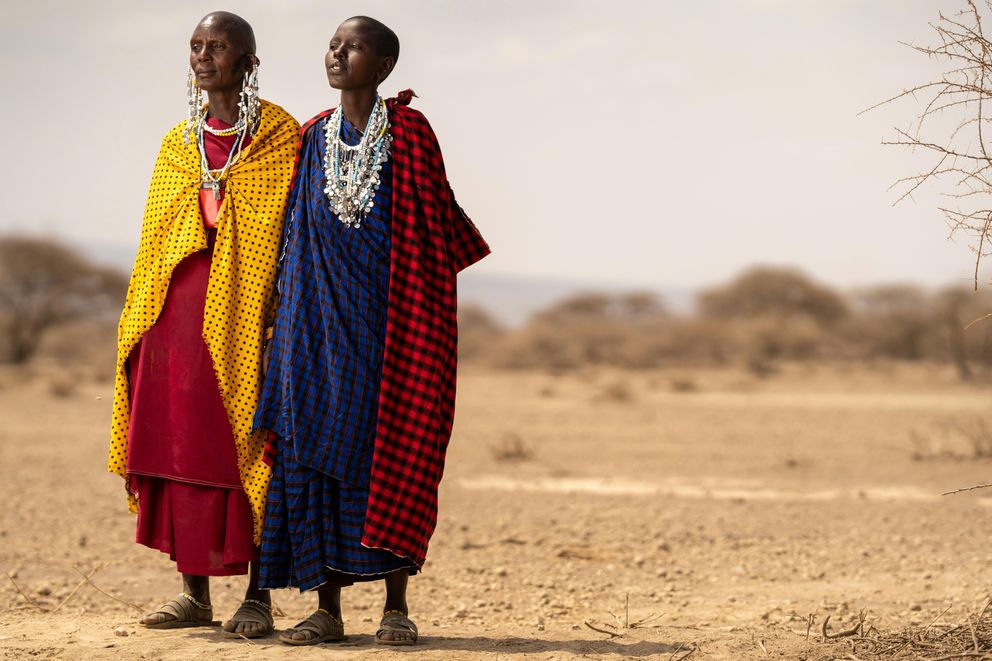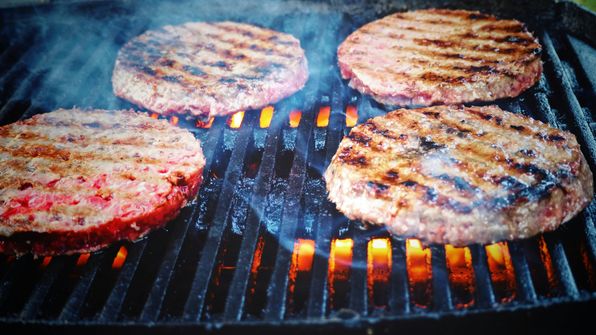
Social Success on the Carnivore Diet: Tips for Staying Committed at Gatherings and Restaurants
Social gatherings often mean a spread of carb-heavy foods and tempting desserts that can make sticking to the carnivore diet feel tricky. But with a b...

The carnivore diet has gained attention globally, but women’s experiences and cultural approaches to animal-based eating vary widely depending on where you are in the world. From traditional all-meat diets in northern climates to modern-day women navigating cultural expectations in more plant-centric regions, women’s relationships with animal-based diets are rich and diverse.
Let’s explore how different cultures embrace animal-based eating, particularly for women, and highlight the unique experiences that shape their carnivore journeys.

In countries like Norway, Sweden, and Iceland, the climate has historically led to an animal-based diet for survival. The colder, harsher conditions meant that vegetables and grains were often difficult to grow, leading to a reliance on meat, fish, and dairy. For many women in this region, the transition to modern carnivore diets feels familiar, as it aligns with their cultural history of consuming nutrient-dense, animal-based foods.
Women in these regions have long relied on fatty fish, reindeer, lamb, and dairy to stay strong and healthy. Foods like fermented fish and game meats are rich in omega-3s and healthy fats, key to supporting women’s hormonal health and fertility.
Example: In Iceland, harðfiskur (dried fish) is a traditional snack packed with protein and essential nutrients, making it a favorite for women maintaining energy levels on animal-based diets.
Research Insight: Studies on traditional Scandinavian diets highlight the benefits of fish and game meats for heart health and maintaining a balanced diet in colder climates.
In parts of East Africa, particularly in Kenya and Ethiopia, animal-based diets have also played a major role in women’s health and sustenance. The Maasai women, for example, are known for consuming a traditional diet rich in meat, milk, and blood from cattle. This high-protein, low-carb approach closely resembles the modern carnivore diet and has sustained women through generations.
The Maasai women’s diet shows how nutrient-dense animal products can help maintain strength and vitality. Lean into a protein-heavy diet that includes organ meats, as they are a potent source of iron and vitamin B12, essential for women’s reproductive health.
Example: For the Maasai, drinking raw cow’s milk and eating organ meats like liver is not just about sustenance but about preserving health and vitality through intense physical work.
Research Insight: Research shows that Maasai women’s diets, rich in animal fats, contribute to low cholesterol and strong cardiovascular health, despite their high intake of animal products.

For women in India, adopting a carnivore diet can be more challenging due to the country’s predominantly vegetarian culture. Many Indian women are raised with vegetarian or vegan traditions rooted in religion, making the shift to an all-animal-based diet socially and culturally complex.
Women in regions where vegetarianism dominates can still thrive on an animal-based diet by creatively sourcing high-quality meats and incorporating them into more traditional dishes. Use spices and flavors from Indian cuisine to make meat-based meals feel familiar, even within a largely plant-based food culture.
Example: Women in urban India who adopt carnivore diets often find ways to blend traditional spices like turmeric, cumin, and garam masala with animal products, creating rich, flavorful dishes that still resonate with their cultural palate.
Research Insight: While plant-based diets have been predominant in India for centuries, studies have shown that increasing access to quality animal proteins can improve nutritional outcomes for women, especially those with iron deficiency anemia.
In Argentina, the love for beef runs deep. With some of the best grass-fed beef in the world, many women in Argentina are already accustomed to a diet rich in animal proteins, making the carnivore lifestyle an easy fit. The country’s traditional meal of asado (barbecue) is an example of a meat-based eating culture that celebrates high-quality animal products.
Argentinian women who follow carnivore diets often prioritize grass-fed beef, which is high in omega-3s and conjugated linoleic acid (CLA), both of which support hormonal health and weight management.
Example: A typical Argentine asado, with its focus on beef cuts like ribeye and short ribs, highlights the benefits of high-quality, nutrient-dense meat.
Research Insight: Studies show that grass-fed beef contains higher levels of anti-inflammatory fats compared to grain-fed beef, making it an optimal choice for women concerned about health.
Women in the Middle East have long relied on lamb, goat, and camel meat as primary sources of nutrition. These meats, combined with dairy like yogurt and cheese, create a naturally low-carb, animal-based diet. Today, women in these regions are increasingly interested in adapting traditional dishes to fit modern carnivore principles.
Blending traditional dishes like kebabs, shawarma, or lamb stew with the carnivore diet makes the transition smoother for women. These meals are packed with protein and healthy fats, perfect for a carnivore lifestyle.
Example: Women in Lebanon and Jordan often enjoy grilled lamb kebabs as part of their diet. These dishes offer an easy way to stick to carnivore principles while maintaining cultural heritage.
Research Insight: Research shows that a diet rich in lamb and goat meat, common in Middle Eastern cuisine, provides high levels of iron and zinc, crucial for women’s reproductive health.
Q: How do different cultures incorporate animal-based diets for women?
A: Many cultures have a long history of animal-based diets. In Scandinavia, for example, women traditionally consume high-fat, nutrient-dense foods like fatty fish and game meats due to cold climates. In East Africa, Maasai women rely heavily on animal proteins like meat and milk, while Argentina is known for its women’s consumption of high-quality grass-fed beef as part of the popular asado tradition.
Q: Can women in vegetarian-heavy cultures like India follow the carnivore diet?
A: Yes, though it can be more challenging in predominantly vegetarian cultures like India, women can adopt the carnivore diet by focusing on animal products available in their region, like eggs, dairy, or meat from local sources. Incorporating traditional spices and flavors into carnivore-friendly meals also helps make the transition easier.
Q: What are the health benefits of animal-based diets for women in different regions?
A: Studies have shown that diets rich in high-quality animal proteins, like the Scandinavian and Maasai diets, support better cardiovascular health, hormone regulation, and overall vitality in women. High-fat, protein-rich diets contribute to increased energy, improved reproductive health, and better nutrient absorption.
Q: How can I adapt the carnivore diet to my own cultural background?
A: You can adapt the carnivore diet to your culture by focusing on traditional animal-based foods your culture already consumes. For example, use familiar cooking methods and spices to prepare meats, or focus on cuts of meat commonly used in your cuisine.
The information provided in this article is intended for general informational purposes and does not constitute medical or nutritional advice. The carnivore diet may not be suitable for everyone, and cultural, health, and individual needs should be taken into account. It is important to consult with a healthcare provider or a registered dietitian before making significant dietary changes, especially if you have underlying health conditions. Results may vary depending on individual factors, and professional guidance is recommended to ensure a balanced and healthy approach to dietary choices.
Women around the world experience the carnivore diet differently, shaped by their unique cultural histories, traditions, and nutritional needs. Whether thriving on meat in the cold climates of Scandinavia or navigating cultural complexities in vegetarian-heavy regions like India, the carnivore diet can be adapted to support women’s health across the globe.
Takeaway: Each culture brings its own flavor to the carnivore diet. By blending tradition with modern dietary needs, women worldwide can embrace animal-based eating in a way that honors both their health and heritage.
Embrace it: No matter where you are, the carnivore diet can be adapted to suit your needs and your culture. It’s all about finding what works for you, with the support of rich traditions and the power of nutrition.

Social gatherings often mean a spread of carb-heavy foods and tempting desserts that can make sticking to the carnivore diet feel tricky. But with a b...

The carnivore diet is often seen as straightforward: eat meat, keep it simple. But adapting it seasonally can bring freshness, variety, and local flav...

The carnivore diet has become increasingly popular, but like any extreme dietary approach, it raises important questions—especially for women concerne...

Living with Chronic Obstructive Pulmonary Disease (COPD) can make everyday activities feel like a marathon, especially for women who are juggling heal...

recovering from COVID-19 can be a long journey, especially for women who may face lingering symptoms like fatigue, brain fog, and muscle weakness. Whi...